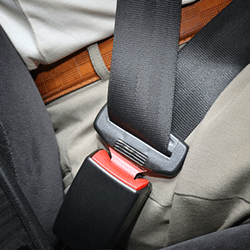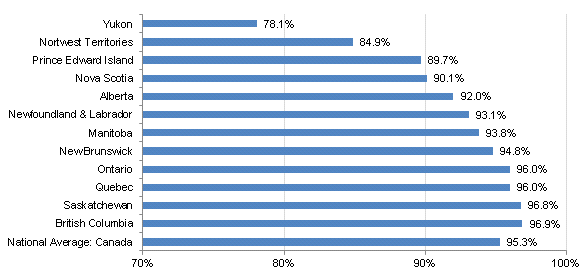 OPP kick off annual fall seatbelt compliance campaign. Do you buckle up?
OPP kick off annual fall seatbelt compliance campaign. Do you buckle up?
Seatbelt use in Canada is high. It's been estimated that more than 95 per cent of us buckle up. But, given Canada's current population the five per cent who don't regularly buckle up represent almost two million Canadians. That's two million Canadians who regularly chance a traffic ticket that may not only affect their car insurance rate, but, more importantly, cause unnecessary risk to their safety.
Police across Canada still consider not wearing a seatbelt one of the "Big Four Killers" on the road along with aggressive driving, driving while impaired, and distracted driving. How can it still be considered one of the Big Four if 95 per cent of us buckle up? Because, in collisions where there's a fatality, about one-third were not strapped in.
- Related Read: Distracted Driving Laws In Canada
- Related Read: Five Bad Driving Habits That Could Cost You
Statistics like these are why every fall the OPP remind motorists to buckle up with their fall seatbelt campaign with the support of the provincial government.
"This campaign serves as an important reminder that every driver and adult passenger has a responsibility to buckle up," David Orazietti, Minister of Community Safety and Correctional Services. "Drivers are also responsible for ensuring all passengers under the age of 16 are properly restrained. It's especially important that small children are in approved seat restraints. Buckling up is the law and saves lives in the event of a collision."
How does seatbelt use vary across Canada?
In 2011, Transport Canada released the results of its seatbelt use in Canada survey, and while the survey found that overall 95 per cent of us buckled up, it also noted some significant regional variations.
Seatbelt use in Canada

Who doesn't buckle up?
In addition to regional variations, the survey also found that:
- Passengers and drivers of pickup trucks are less likely to use their seatbelt than those in cars, minivans and SUVs; the rate of seatbelt use by occupants in pickups is only 92% compared to the national average of 95.3%.
- Back seat passengers are less likely to buckle up than those in front. The rate of seatbelt use was much lower among back seat passengers at 89.2%, compared to front seat passengers at 95.5%.
- Female drivers are more likely to wear their seatbelt at 96%, over male drivers at 94.3%
- Drivers in rural areas had a lower seatbelt use rate at 92% versus 95.8% in urban areas.
- Seatbelt use generally increases as drivers age. Perhaps we learn as we get older that seatbelts really do exist for a reason; they keep us safe.
Seatbelt use in Canada: How does not buckling up affect your car insurance premium?
What would happen to your car insurance rates if you got a ticket for not wearing your seatbelt? We ran some car insurance quotes here at Kanetix.ca to get a feel for how a ticket for failing to wear your seatbelt would impact an otherwise clean driving record for a 35-year-old driver in Toronto.
The result? Adding a ticket for failing to wear a seatbelt, to an otherwise clean driving record, added 17 per cent to the cheapest car insurance quote.
Seatbelts save lives, and wearing one is also the law. Stay safe, and avoid getting tickets by buckling up to keep your car insurance premiums low.




